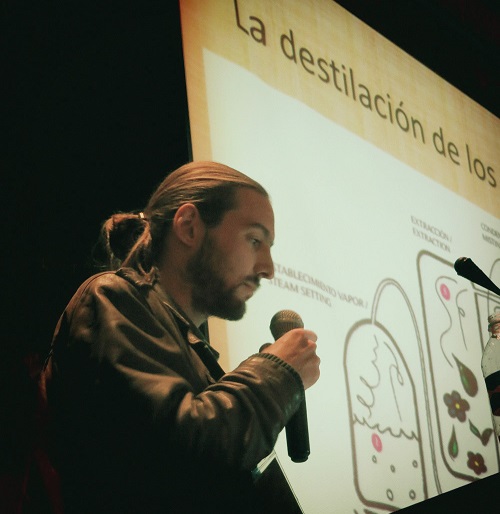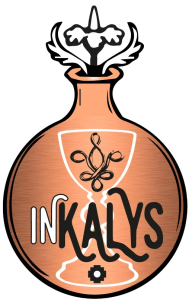The Khunuca, pronounced Juñuca (Muña blanca, Muña Juñuca) – Satureja boliviana (Clinopodium bolivianum) - is a perennial plant from the Labiatae family that takes the form of a small shrub, typically reaching a height of 60 to 80cm. It thrives at an altitude of 2500 to 3500m on the eastern slopes of the Andes. It is particularly abundant in the south of Peru around Cusco, growing on mountain slopes in small valleys, along roadsides, and in Andean forests. It prefers shady places with well-drained soil and steep terrain.
The Juñuca has a branched stem at the base and small leaves that resemble those of oregano, hence its nickname, "Inca Oregano." Its highly aromatic leaves emit a minty scent with hints of lavender and oregano, possessing a slight decongestant and toning effect. This explains why it is often used to combat altitude sickness. It's worth mentioning the existence of a close relative of Juñuca, which is often confused with it, called Muña (Mynthostachys setosa). Both are very similar species, both known as "Andean mint." Muña is actually much more similar to mint than Juñuca, which is closer to savory or thyme. It's also worth noting that Juñuca generally offers a higher concentration of carvacrol, linalool, and kaempferol than Muña, which, in turn, offers a greater quantity of aromatic ketones, notably pulegone.
Chemical constituents: 123
Aerial parts:
- Flavonoids (kaempferol, quercetin, rutoside, eriodictyol, apigenin)
- Phenolic acids (caffeic acid, coumaric acid)
- Ursolic acid
- Monoterpenols (linalool, mentol)
- Ketones (menthone, pulegone, piperitone)
- Esters (geranyl acetate, carvacryl acetate)
- Sesquiterpenes (bicyclogermacrene, germacrene-D, β-caryophyllene)
- Monoterpenes (y-terpinene, camphene, alpha-pinene, p-cymene)
- Phenols (carvacrol, thymol)
*Note: The Juñuca has a very wide geographical distribution ranging from Argentina to Colombia and has different chemotypes depending on the region. Further investigation is needed to identify these different chemical variations.
Traditional Andean Usage:
The Juñuca has been used for its medicinal properties by Andean populations for a long time4. Alongside the Eucalyptus (which was introduced only in the late 19th century), Juñuca is one of the most notable aromatic medicines used in the Peruvian Andes. It is known for its ability to relieve digestive problems such as bloating, flatulence, diarrhea, and especially gastritis. It is consumed in the form of digestive and carminative infusions. It is also used as a condiment in the traditional 'chuño' soup (frozen and dried potatoes), which is considered a powerful natural antibiotic. It is also attributed with antihelminthic properties, as some Andean herbalists recommend it as a cure for parasites. During the Inca era, Juñuca was macerated in honey, which was then consumed to fight against lung infections. It is also sometimes used as an anti-inflammatory to relieve pain caused by certain injuries or rheumatism; it is then infused in a hot bath. It is worth noting that potato farmers use Juñuca a lot to preserve their harvest and transport their products to local markets. Potato bags are filled alternately with layers of the aromatic plant to improve preservation and prevent bacteria from developing. It is also considered an insecticide and is used in the formulation of certain natural pesticides. In very high places, Muña Juñuca is often associated with coca leaves and consumed as an infusion to alleviate headaches and altitude sickness. It is worth mentioning the cultural importance of Khunuca for its presence in the Qhasqa de Taya ritual Qhasqa de Taya5 in Arequipa, which was declared a cultural heritage of the Peruvian nation. During this celebration dedicated to the fertility of Pachamama and the sacredness of its waters, the Paqho offers an offering consisting of various elements (flowers, candies, streamers, seashells, etc.) placed on a bed of Khunuca.
In modern herbalism:
Juñuca is a digestive system anti-infective, known specifically for its anti-helicobacter pylori properties6, a bacterium responsible for most gastritis cases. When consumed as an infusion, this property can be attributed to the presence of the flavonol kaempferol, which is known for its inhibitory effects on Helicobacter pylori induced inflammation7. It is interesting to note that an in vitro study has also demonstrated the anti-helicobacter pylori power of the essential oil of Satureja boliviana8, which suggests a synergistic effect of the flavonoids with the aromatic molecules of Juñuca such as carvacrol, linalool, and other active principles mentioned above. On the other hand, volatile aromatic compounds such as menthone, pulegone, and carvacrol, among others, can justify the use of the plant as a natural insecticide. Juñuca also has a slight toning and diuretic effect due to the presence of phenolic acids, which is why it is sometimes recommended for relieving heavy legs and water retention. Additionally, a recent study aimed to investigate the anxiolytic properties of Juñuca essential oil. The study9 concluded that diffusing Satureja boliviana essential oil during mindfulness meditation sessions can help reduce stress and anxiety levels of participants. Juñuca leaf infusion is also carminative and eupeptic, as well as slightly toning, and can relieve headaches and stomach aches caused by altitude sickness.
Warnings and contraindications:
When consumed mainly in the form of infusions, decoctions, and tinctures, there are very few contraindications. As for the essential oil, it is generally well-tolerated. However, careful dosing is advised due to the presence of ketones. It should be noted that the plant has a history of use during childbirth, and some midwives attribute uterotonic properties to it, which may be justified by the notable presence of these ketones. Therefore, the consumption of the essential oil is not recommended during pregnancy and lactation.
Beautiful Muña Khunuca with your White Flowers
I am very grateful for the existence of this wonderful plant. Its aroma is always a blessing when encountered along the trail in the high Andes; it can be rubbed within the palms to activate all senses and revive energy. I have had numerous opportunities to distill it, and its essence has always filled me with joy and helped me find a clear-minded state. The Juñuca is a well-balanced plant; delicate yet powerful and manifests a majestic spirit in its scent.
¡Tu presencia siempre alegra el camino en los Andes!

Pierre
Fitoterapeuta, Aromaterapeuta, Wellness coachHerborista de profesión, apasionado por la etnobotánica y practicante de la alquimia. Mis intereses abarcan desde las sabidurías antiguas hasta las ciencias modernas. Investigo temas relacionados con la herboristería, la nutrición, la alquimia y la longevidad. Me dedico a la formulación de productos naturales en el laboratorio. Doy talleres y consultas en salud holística, integrando herramientas como la fitoterapia y la aromaterapia, la alquimia y el hermetismo, la nutrición, el fitness y la longevidad.

Inkalys es un emprendimiento que nació de la voluntad de fomentar la salud, revalorando los conocimientos ancestrales. Queremos preservar la memoria de las poblaciones nativas, la soberanía y el derecho a la salud natural. Nuestra misión es investigar sobre los principios activos de las plantas y experimentar nuevas formas de tratamiento. Si te gustó este artículo y deseas hacer una donación, puedes hacerlo con criptomonedas. Su apoyo significa mucho para nosotros ya que sirve a la preservación del conocimiento ancestral y el desarollo de productos alquímicos.
¿Te gusto este artículo? Considera hacer una donación
- Compuestos fenólicos mayoritarios en Satureja boliviana
- Essential oils of Satureja boliviana
- Chemical composition: Satureja boliviana essential oil
- Una puesta al día de “muña blanca”
- Ritual Qhasqa de Taya - Patrimonio Cultural de la Nación
- Evaluación de la actividad anti-Helicobacter pylori
- Kaempferol en la inflamación inducida por Helicobacter pylori
- Ensayo In vitro (Aceite esencial vs Helicobacter pylori) - pag. 78
- Mindfulness meditation - Aromatherapy with essential oils

